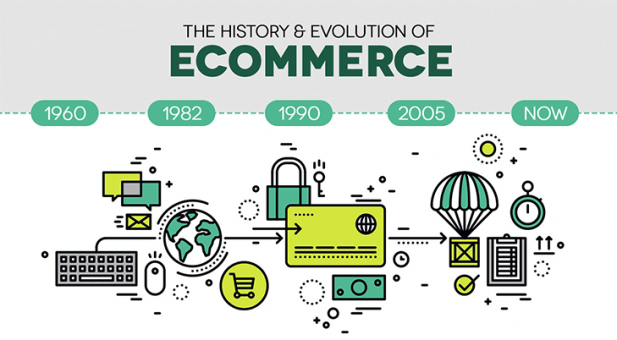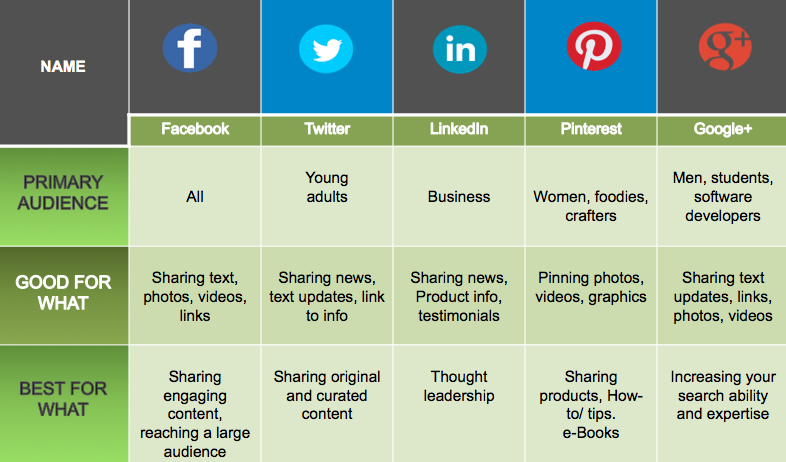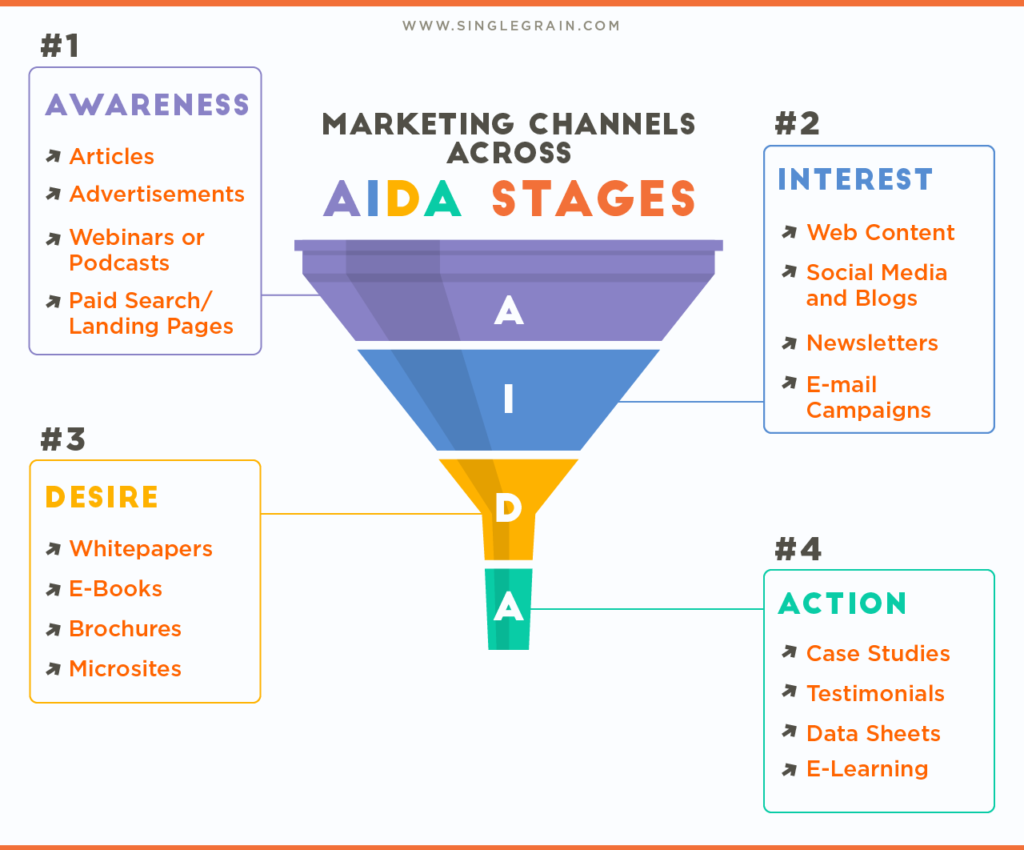Selling On Online Store: Best Strategies To Excel in eCommerce Marketing

Table of Contents
- Brief History
- Key Statistics on eCommerce
- What is eCommerce Marketing?
- What is an eCommerce Marketing Strategy?
- Channels to successfully execute eCommerce Marketing
- Common eCommerce marketing terminologies
- Strategies to master eCommerce Marketing
- Key Takeaways
- Conclusion
- FAQs
The internet is driving businesses in the 21st century. Internet users can browse, compare, and purchase the items or services they require using a variety of online platforms. eCommerce has had a profound impact on everyday life.
Most eCommerce giants now also provide an easy buying experience through their android or IOS based apps, easy-to-navigate websites, and free pickup of the products if a customer wants to return. And this humongous progress in eCommerce has not happened overnight. Ecommerce marketing is behind a lot of this progress. But before going into what is eCommerce marketing, let’s take a look at the history of eCommerce.
Brief History of eCommerce

What began as the electronic exchange of business documents as eCommerce using electronic data interchange transformed after the inception of the internet in 1991.
Many businesses shifted online after the introduction of the first browser in 1994.
The inception of the internet eliminated many intermediaries involved in the traditional brick-and-mortar trade. Businesses save money and time to reach a larger audience through the internet.
Technological developments in broadband, software, laptops, smartphone, tablets, and payment services like digital wallets, UPI, etc., drove eCommerce further to new elevations.
Key Statistics on eCommerce
According to the GE Shopper Research Study, more than 85% of consumers conduct online research before purchasing a product or service.
According to Statista, over two billion people purchased goods or services online in 2020, and global e-commerce sales surpassed 4.2 trillion US dollars in the same year. Global retail e-commerce sales increased by more than 25% during the pandemic year.
According to their survey results, one in every two online consumers browsed Amazon platforms or search engines for inspiration or to actively begin searching for products.
Before making a purchase decision, many online shoppers will read up to six product reviews. Grant Thornton estimates that eCommerce in India will be worth US$ 188 billion by 2025.
The major eCommerce players have reached every nook of the world. This eCommerce penetration led by technological advancements would have never happened if the leaders in this sector failed to secure belief in this system.
This apex trust of the masses in eCommerce services is a culmination of improved marketing strategies employed over the years.
So, understanding what is eCommerce marketing and its effective implementation to your niche will determine the future of your business.
What is eCommerce Marketing?
The avenues of digital marketing reached the eCommerce genre when it was required. So, what is digital marketing in eCommerce? In general, marketing is the overall strategy for communicating with customers about your brand. It implies the activities a company employs to promote the purchase or sale of a product or service.
Ecommerce marketing is the process of increasing brand awareness, sales, and loyalty for an eCommerce or online store. It implies encouraging people to buy a product or service from a company that sells it online.
There are six models of eCommerce business:
- B2C
- B2B
- C2C
- C2B
- B2A
- C2A
A stands for Administration, Business is abbreviated as B, and C stands for the customer.
The product or services offered in the B2C model will vary from the C2A model.
For example, a business may be selling t-shirts in the B2C model while another company may assist in the e-filing of tax returns.
Therefore, the marketing strategy for these two business models differs according to the target audience and product category.
What is an eCommerce Marketing Strategy?
An eCommerce marketing strategy is a timeframe for the actions undertaken to achieve the marketing objectives. You cannot come up with a realistic marketing strategy unless you create the persona of your ideal buyer.
It establishes your target audience. You have to answer definitive questions to develop the persona of your ideal customer.
- What is the gender, age, educational level, profession, and consumption behavior of this person?
- What are the interests of your ideal customer?
- Where and how can your product help this person?
Once you know your intended buyer, you can plan the content, audio, video, or advertisement you will create to entice your customer.
There are a variety of channels, tools, and tactics to create an overall eCommerce marketing strategy. A good marketing strategy entails detailed long-term continuous planning of promotional ads and content that would be placed in various forms on the internet.
It includes creating advertisements, running campaigns, offering vouchers, seasonal discounts, audio-visual educational or entertaining content, strategically placing consumer testimonials, and creating compelling website landing pages to target the ideal customer.
However, you must set goals based on your business benchmarks and use the tools that work best for you.
You must not put all your eggs in one basket. Instead, use different techniques to maximize your digital presence.
Channels to Execute eCommerce Marketing
Create an easy, simple, and fast eCommerce website
You must provide a simple and seamless buying experience to your customer. A good website creates the first impression of your brand and evokes a feeling about the quality that you would provide. This is an important eCommerce marketing tip.

So to outclass your competitors, first organize the products page into the appropriate categories. Add clear labels, descriptions, and professionally clicked pictures.
Illustrate your product, why it is superior, and its key features. Place the cart neatly at the top left corner with its access link on every product page window.
A poorly designed eCommerce website means that your potential customers may have difficulty finding the items they’re looking for and, as a result, will not make a purchase. Additionally, choose an easy-to-read font to make your website more visually appealing.
It’s also critical to strike the proper balance between text and images. Wherever required, add explainer videos and product demos. Aim for practicality and user experience rather than completing the task as quickly as possible.
The next step in establishing an eCommerce website is to create content for it. Create a few personalized well-written Home, About, Privacy, and Return Policy pages.
Infuse it with SEO-friendly long-tail search keywords to get your eCommerce website easily read by the search engine.
Write a blog
Get proactive with writing a blog that informs, educates, and solves problems in the product category you sell.
Create content that targets different phases of a buyer’s journey. Keep updating your website and blog regularly because search engines automatically promote websites that get updated frequently.
Crafting high-quality and unique content that will resonate with your customers in a way that will entice them to interact with you, buy from you, and follow you. Last but not least, develop a mobile-friendly website and ensure fast loading of pages.
Dominate social media business pages
Before launching your eCommerce business, you must start diligently building awareness of your brand in your target audience.
Social media marketing is a critical component of eCommerce marketing and one of the most important channels for business growth.
Marketers have been using social media to connect with eCommerce customers for quite some time. Social media has evolved as an eCommerce platform.
Start with your eCommerce page on major social media platforms to build a brand and convey your voice. Though it is a long process, paid social media ads can hasten this process to some extent.
The popularity of social media has propelled an increasing number of web users to shop online and use social media to explore brands.
Most social media networks now provide free built-in solutions for advertising, selling, and customer service — in other words, tools that can help you increase your sales. Instagram, Facebook, Pinterest, and Snapchat allow brands to bring their eCommerce on these channels. Designating one marketing strategy for every social media platform is a sure shot to failure.
Choose the right social media platform for you

Another ecommerce marketing tip is to choose the appropriate social media platform. Each platform has a unique tone, style, and presentation pertinent to a particular age group, and eCommerce must adhere to these parameters.
Snapchat is very popular among teens and young adults, whereas Instagram and Facebook seem inviting to all age groups. Twitter is suitable for mature intellectual content and catches up with topical trends. Youtube and Pinterest attract a diverse audience based on their interests.
Advertising is available on all of the major social networks. That doesn’t mean you have to use them all.
It’s also advantageous to know which networks are popular with your target audience when deciding where to place your ads. Where is your target audience most engaged, concentrated, and accessible?
Create profiles, encourage customers to follow you, and share captivating content such as videos, photos, memes, viral content, topical content, articles, and special offers.
Why do you need to make videos?
You can succeed in getting customer attention in the first 9 seconds of the video if you describe the value proposition first. Video content fetches maximum benefit from paid advertising options on social media channels.
Tutorial videos, product reviews, and “unboxing” videos are all video formats that show current customers how to use your product and exactly what they will receive if and when they purchase.
You’ll be in a good position to be discovered if you use highly searched keyword terms to determine your topics and share videos related to your product. Implementing YouTube successfully as part of your eCommerce marketing strategy will help to increase customer satisfaction and build long-term relationships with website visitors.
Place a funnel that converts

Marketing funnels are an effective way to make every stage of your customer interaction visible. The AIDA model is used to set up the majority of funnels.
- Awareness: A prospective customer sees your ad, a social media post about you, or hears about you from a friend.
- Interest: They are interested because they believe you can solve a problem and seek more information.
- Desire: The prospect has done their homework and is ready to buy.
- Action: The prospect buys your product, schedules a demo, or does whatever else you want them to do.
A marketing funnel is needed to make online sales, generate traffic, or collect clicks as an affiliate.
Understanding funnels can help you understand why some customers convert and others don’t. Your funnel reveals where you’re losing customers, allowing you to adjust your strategy. The funnel design will differ in a B2C and B2B business model.
Leverage landing pages

A landing page is a standalone web page designed specifically for an advertising campaign in digital marketing. It’s where a visitor “lands” after clicking on a link in an email or ads from Blogs, Safari, Google, Bing, mobile apps, YouTube, Facebook, Instagram, Twitter, or other websites.
Unlike web pages, landing pages have a single focus or goal, known as a call to action (or CTA, for short). A customer who clicks on the landing page is charmed with a compelling copy and spellbinding visuals of your eCommerce.
They were targeted based on their search term, demographic data, or browsing history. A landing page is primarily concerned with making a prospective customer, for example, purchase or subscribe to a SAAS software or a membership.
Having fewer links on your landing page increases conversions. That is why expert marketers always direct their traffic to a dedicated landing page.
Upscale email marketing
Email marketing is one of the most traditional types of digital marketing.
But it has changed over the years and remains central to the overall eCommerce marketing strategy. It has earned the badge to give maximum returns on minimum investment.
So, create a signup form on your eCommerce website and collect emails. Use automation software to send a personalized message and engage with customers after their purchase.
Use email to share interesting, relevant content and provide value to your customer. Ask your customer for feedback or request a testimonial after they have tried your product.
Share customized offers, vouchers, and referral discounts using email. Always send mobile-friendly easy to read emails, and add pictures wherever possible. Re-engage with a customer who has abandoned the cart and ask if you can offer some help.
Execute on Search Engine Marketing (SEM)
Search engine marketing is an online marketing strategy that aims to improve a website’s online visibility in search engine results pages (SERPs) like Google. SEM intersects with search engine optimization (SEO) based on Google’s ranking algorithm to optimize content.
It can include strategies such as rewriting a website’s content and redesigning architecture to achieve higher rankings.
Search engine marketing includes pay-per-click (PPC) campaigns, display campaigns, or product-specific ad campaigns, all of which require you to pay for top spots on search engine results pages.
PPC campaigns on Google ensure that when potential buyers type in search terms that match the keywords of your marketing campaign, they will see a link to your page.
Using PPC campaigns and Google Adwords is popular among established eCommerce marketers to promote their product pages.
Paid partnership with social media influencers
Influencer marketing is an extension of social media marketing which focuses on marketing through influential individuals. The term influencer refers to Snapchat, Instagram, and Youtube accounts with millions of followers and varying demographics.
But it could also refer to a celebrity or community followed by your target audience. According to Influencer Marketing Hub, the influencer marketing industry may grow approximately $16.4 billion in 2022.
Influencers cultivate networks of people who know, like and trust them. They use creative ways to talk about your product. As a result, it is simple for them to generate interest in your online product through a recommendation or “sponsored post.”
Marketing through affiliates
Affiliate marketing is utilized by 81% of brands, and eCommerce sites are ideal candidates. Affiliates are individuals or businesses who assist you in selling your product online in exchange for a commission.
Unlike most social media influencers, affiliates generate product interest through traditional yet effective marketing methods. They frequently use paid advertising.
Marketing based on location
Local marketing employs tracking cookies to serve specialized offers to the target audiences. For instance, you can offer discounted shipping to potential customers in areas where you have a manufacturing unit, warehouse, or on-site store.
It allows you to double down on the areas you intend to expand your reach. There are two main advantages of local marketing:
- First is that you attract a new customer and
- The second is you grow your potential customer base by offering personalized incentives.
Common eCommerce Marketing Terminology
It is critical to understand the meanings of terms used in eCommerce marketing. Save the following glossary of some key terms:
Personas
You need to create the persona of your ideal buyer to establish a successful eCommerce marketing strategy. You have to answer definitive questions to develop the persona of your ideal customer.
What is the gender, age, educational level, profession, and consumption behavior of this person?
What are the interests of your ideal customer?
Where and how can your product help this person?
KPI
Key Performance Indicators (KPIs) are benchmarks or touchstones used by businesses to compare their performance to a target. KPIs are critical for measuring the progress of an eCommerce business, setting future goals, and acting on setbacks. Some of the common KPIs are:
- The traffic-to-lead ratio (new contact rate)
- Traffic on blog posts.
- Number of sign-ups on your email list
- Views on a video promoting your product
- Lead-to-customer conversion rate
- Conversion rates for landing pages
- Marketing revenue attribution
- Customer acquisition costs (CAC)
- Customer lifetime value (LTV)
- Return on Investment (ROI) in digital marketing
- Social media traffic (and conversion rates)
- Mobile traffic, leads, and conversion rates
ROI
Return on Investment, or ROI of eCommerce marketing, is a great tool to see how your marketing strategies help your company grow. A good ROI varies from sector to sector. ROI of 5:1 or 10:1 profit earned on money spent is a good investment.
ROI= (Sales or Revenue growth – Marketing Expenses) / Marketing Expenses
ROAS
The Return on Ads Spend (ROAS) is quite similar to ROI in that it measures returns on paid ad campaigns. It helps alter the marketing strategy to maximize overall ROI on marketing.
Brand
A brand is a face to the name of your business. It culminates through a strategy that involves the brand logo, colors, tagline, copy approach, and tone of voice of your business. Your brand must leave a positive impression.
It must connect with your ideal customers emotionally and make them feel a certain way about your business. Your brand story, website, product packaging, print or digital communications, and marketing campaigns are the mediums of brand communication.
Website Traffic
It refers to the number or volume of users accessing your website.
Lead
A lead is a person or organization who shows interest in what you are selling or the services you offer.
Tips to master eCommerce Marketing
Capitalize on User Generated Content (UGC)
What if you could get your customers to market for free? User-generated content, or UGC, is about finding ways for your customers to promote and share your business.
You can hold competitions where customers enter to win by displaying your product.
Exploit third-party review platforms, where customers share feedback about your product.
Build a loyalty program
A loyalty program is an incentive for a loyal customer to continue doing business with you through relevant offers and discounts. While building a customer loyalty program takes some planning and work, it pays off in repeat business, UGC, referrals, and retention. Offer your loyal customers customized birthday deals.
Before finalizing and enacting a loyalty program for your eCommerce business, ensure your customer is repeating purchases, tags you on their social media, or shares your content.
Proactive Word of Mouth Marketing (WOMM)
Word of mouth marketing is one of the most powerful marketing tools in business marketing tactics. While you can achieve this organically by providing a great customer experience, you can also encourage your customers to share their experiences on your website or social media pages. Allow a customer to leave a review for the product or service you have given. It demonstrates to your visitors that your product is more than a gimmick and that your ultimate goal is to help them.
Customers dwell more on your website and social media pages, consequently their engagement with the brand increases. It usually results in a lower bounce rate and possibly a lower cart abandonment rate.
Draw benefits of customer testimonials
Testimonials naturally help you market your brand. A great testimonial consists of compelling quotes from current customers that make a product or service seem like such a no-brainer that anyone would sign up for it. According to a study by Harvard Business Review, honest bragging lets you reap the rewards of appearing truthful.
Strategically highlight customer testimonials on your website and header images.
Execute referral marketing
If you deliver a great product and post-purchase service, your brand organically reaches other potential buyers because customers share their experiences with their friends, family, and colleagues. However, you can ask your customers to invite others in exchange for a discount, cash back, or voucher.
Activate chatbox
Create an automated chatbot and a query box on your website. Try to resolve customer issues as soon as possible. Leave a clear message of a timeline within which you will revert.

Key Takeaways
- Develop a detailed persona of your ideal customer.
- Create an SEO-optimized eCommerce website containing long-tail keywords of your genre.
- Drive sales of specific products by optimizing sales funnel and standalone landing page.
- Make use of all the social media channels, tools, and technologies to drive sales.
- Produce a video of your product or services whenever possible and publish it on all your channels.
- Brag about the good reviews you received for your services.
- Publish customers testimonials on your website.
- Excel in your sector using SEM, Email Marketing, Influencer Marketing, and Topical Relevant content.
Conclusion
eCommerce has had a profound impact on everyday life. Almost everything you need is available online. It requires a sound marketing strategy to run a successful eCommerce business in the cutthroat competition of brands.
There are a variety of channels, tools, and tactics to create an overall eCommerce marketing strategy. A good marketing strategy entails detailed long-term continuous planning of promotional ads and content placed in various forms on the internet.
You must set clear and achievable business goals and milestones by employing the tools that work best for you.
FAQs
It helps to reach the right audience and generate revenue.
You can use Google Keyword Planner.
Both terms are different; e-commerces stands for electronic trade while eCommerce means a business that runs on the internet.
Yes, it is regarded as the most efficient tool to retain customers for a long time.
You can hold a competition and offer rewards to the customers who share your products on their social media profiles.
Latest Blogs
Learn how to rank on AI search engines like ChatGPT, Perplexity, and Gemini by optimizing your content for authority, structure, and relevance. Stay ahead in AI-driven search with this strategic guide.
Explore the best healthcare SEO services for your medical practice. Improve online visibility and effectively reach more patients in need of your services.
Discover top social media agencies specializing in banking solutions, enhancing financial services and driving engagement.
Get your hands on the latest news!
Similar Posts

Branding
6 mins read
12 Ways to Promote Your Brand on Etsy

Branding
8 mins read
10 Tips for Marketing Your Fashion Brand in 2022

E-commerce Marketing
8 mins read